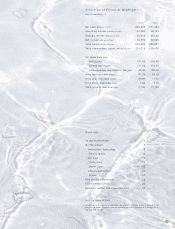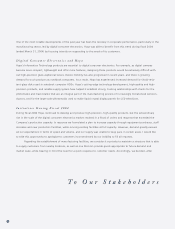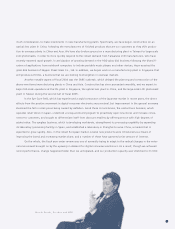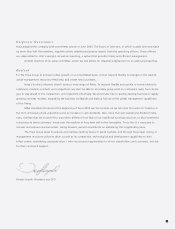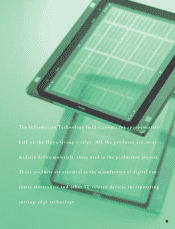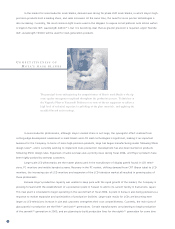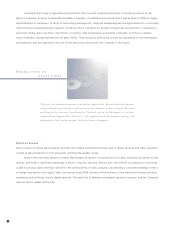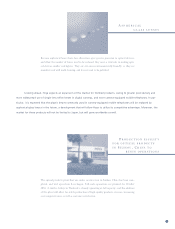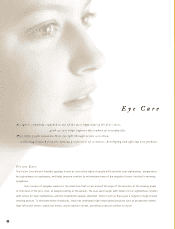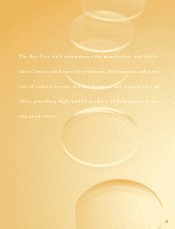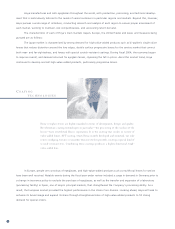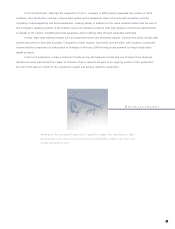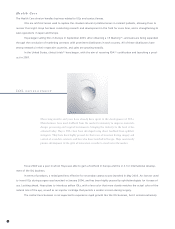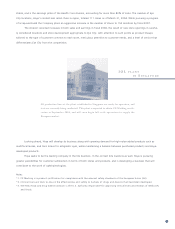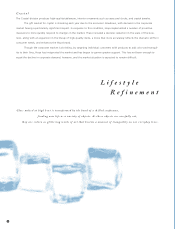Pentax 2004 Annual Report Download - page 13
Download and view the complete annual report
Please find page 13 of the 2004 Pentax annual report below. You can navigate through the pages in the report by either clicking on the pages listed below, or by using the keyword search tool below to find specific information within the annual report.
11
Large-scale photomasks are necessary for efficient production with the seventh and
eighth generation glass panels that are over two meters in length. As the leading company
working with large-scale photomasks, Hoya is employing its technical skill to meet cus-
tomer expectations, and maintain competitiveness.
LCD
PHOTOMASKS
around late 2006 to 2007. Hoya’s technical development capabilities have been well regarded in the display panel industry,
and we will continue to strive to achieve closer relationships with our customers, and develop the next generations of large-
scale masks.
Notes:
*1. A nanometer (nm) equals one billionth of a meter.
*2. Design rules are restrictions set on LSIs at the design stage to ensure conformity with the manufacturing process.
*3. Fifth generation refers to a glass size of 1,100mm x 1,300mm.
*4. Sixth generation refers to a glass size of 1,500mm x 1,850mm.
*5. Seventh generation refers to a glass size of 1,870mm x 2,200mm.
*6. Eighth generation refers to a glass size of 2,120mm x 2,320mm.
GLASS DISKS FOR HDDS
Glass disks are used in the HDDs that are the memory devices in computers and other devices. Hoya handles the manufac-
turing process from melting of the glass to the final processing, producing both substrates (glass substrates, the polished
glass disks) and media (glass substrates coated with a magnetic layer).
During fiscal 2004, sales of both substrates and media increased. The bulk of substrate sales was for 2.5-inch prod-
ucts. These are employed in infrastructures such as wireless LANs, driven by the shift in office computers from desktop to
notebook styles. Shock-resistant glass disks are routinely used in notebook computers and other mobile devices, and
demand increased to a point that exceeded supply. In terms of facilities, in March 2004 Hoya took over the substrate busi-
ness of Nippon Sheet Glass Co., Ltd., further enhancing its position in the market.
In media products, sales of 40GB type disks are growing steadily, developing into a stable business. Performance was
also boosted by increasing demand for 1.8-inch and 1.0-inch glass disks, due to the growing popularity of portable music
players. Currently, Hoya retains an advantage as the only company with production technology for 1.0-inch substrates, and
is focusing on producing even smaller products.
HOYA 2004-e 入稿用0705 04.7.22 7:59 PM ページ 12


